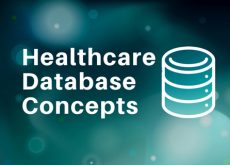Here is a quick read on a concept that is very important to analysts, project managers, and clinicians who work with just about any Healthcare IT system: discrete data in Healthcare. Any system is only as good as the quality of data that is collected and updated to database tables. That data will be viewed and analyzed at many turns to make key decisions and drive clinical and financial outcomes.
So, what exactly is discrete data?
Data that is collected discretely is stored in a database table at the lowest level of granularity. It is both measurable and reportable. The best way to explain this is with the tables below. Here we have a medication order entered in a theoretical system that has most of the medication information in a text field called “Dosage Instructions”, which is an example of non-discrete data:
| Medication Name: | Prilosec |
| Dosage Instructions: | 1 20mg tablet twice daily for three days |
We can easily see that having “1 20mg tablet twice daily for three days” in a single database field is a terrible idea. If someone needs to run a report to find all instances of Prilosec given over a period of time, they would need to parse out all the data in that field, accounting for endless variations and mistakes that could exist in the data. It is not easily measurable or reportable.
Here is the same data with each data element captured discretely:
| Medication Name: | Prilosec |
| Dosage Qty: | 1 |
| Dosage Strength: | 20 |
| Dosage Units: | mg |
| Dosage Form: | Tablet |
| Frequency: | BID |
| Duration Number: | 3 |
| Duration Length: | Days |
Now we have data that is stored in a database with fields for each discrete value. Data can now be queried by any of the data fields to produce meaningful results. If a report creator wanted to know all instances of any given strength, duration, or whatever, for this or any other medication, it would just be a matter of querying the correct fields.
Next Up:

Read More


